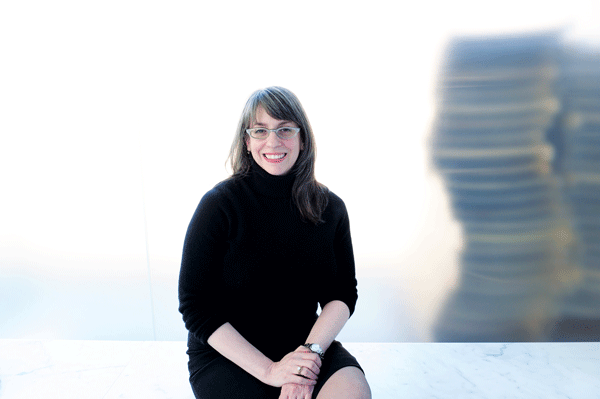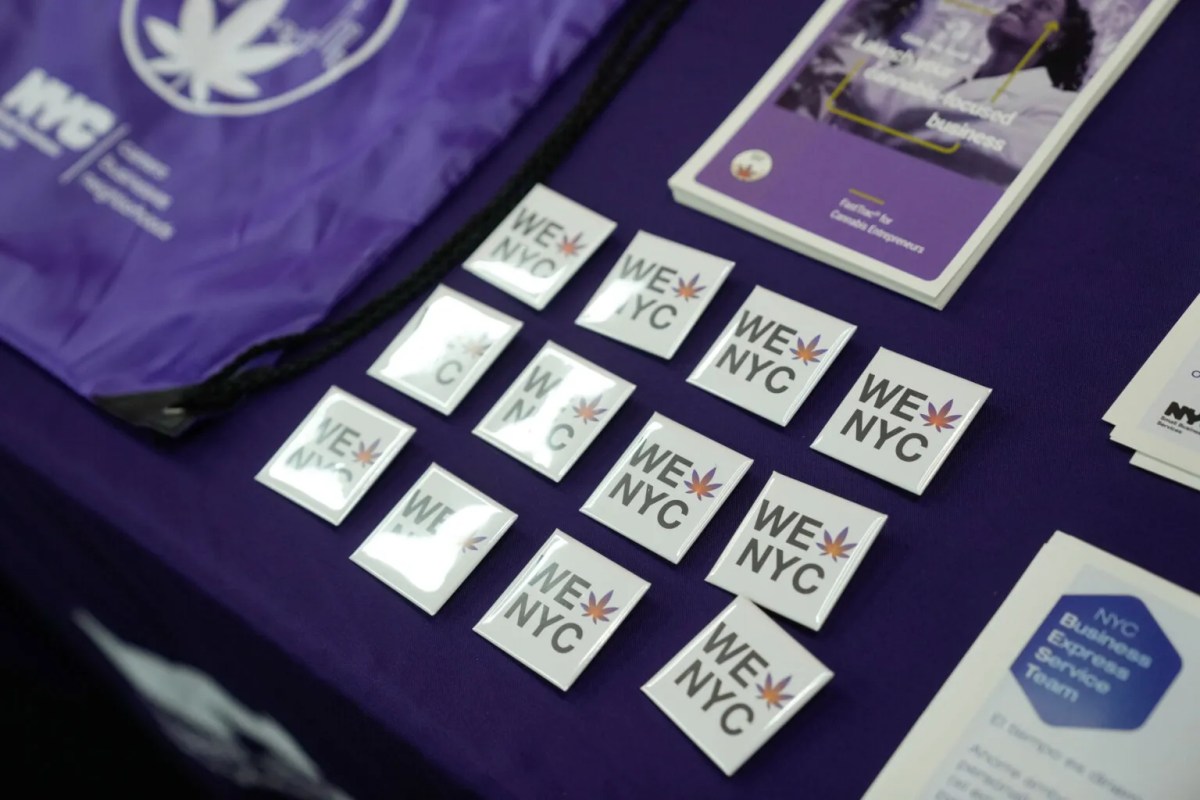[media-credit name=”Abby Spilka. Downtown Express photo by Terese Loeb Kreuzer” align=”aligncenter” width=”600″] [/media-credit]BY HELAINA N. HOVITZ | One could argue that, technically, everyone ultimately dies alone, but what is certain is that no one wants to.
[/media-credit]BY HELAINA N. HOVITZ | One could argue that, technically, everyone ultimately dies alone, but what is certain is that no one wants to.
To walk a slow, painful, and lonely march toward death is a cruel fate. Most people desire at the least a hand to hold, or eyes to look into when the inevitable happens.
Abby Spilka, 45, firmly believes that nobody deserves to die alone, and does everything in her power to make sure that elderly and sick downtown residents won’t have to.
By day, Spilka is the Associate Director of the Museum of Jewish Heritage in Battery Park City, but in her free time, she volunteers with the Visiting Nurse Service of New York, visiting patients in their Lower Manhattan homes. Spilka is also a “Vigil Volunteer,” called specifically to sit with patients who have only hours to live.
The core responsibility of both jobs is, “to bear witness to a life lived,” according to Spilka. The task is a familiar one to her, as her day job is to help keep the memories of those tragically lost during the Holocaust alive. In 2001, she worked for the museum in an off-site office six blocks from the World Trade Center and watched the events of 9/11 unfold from her office window.
To say the least, Spilka possesses a unique kind of firsthand knowledge of the ways in which war crimes have affected millions of people who died alone and in pain, many without being given a chance to say goodbye.
The museum’s east wing was the first new project to break ground after 9/11 and the museum is a celebration of life rather than death, “a living tribute to memory.” Several walls are papered with the faces of 3,000 children deported from France to various concentration camps. These photos, says Spilka, are all too reminiscent of those found on the “missing” posters that appeared after 9/11.
“Every generation says, ‘Never forget’ and ‘We have to make sure it doesn’t happen again,’ but then…” said Spilka.
While putting together a special exhibition on World War II veterans, Spilka met a former marine named Pearl Scher, one of the first residents to take up assisted living in Battery Park’s Hallmark retirement home.
Scher was a diligent Downtown activist in her later years, serving on Community Board 1, lobbying on behalf of a children’s playground, fighting for a bus route to accommodate Hallmark seniors, co-founding the Downtown Synagogue and walking through the neighborhood to make sure people were registered to vote.
The two quickly bonded over their shared experiences of 9/11 and struck up a friendship. When Spilka found out that Scher had been diagnosed with pancreatic cancer in March of 2006, she started visiting her at home twice a week.
“For someone who was suffering, she looked great,” Spilka recalled. “When I told her so, she said it was because she was in hospice care.”
That’s when Spilka decided to train to become a volunteer with V.N.S.N.Y. A hospice volunteer provides many different kinds of support: reading, socialization, respite or support for a caregiver or a family member, helping the patient write goodbye letters, taking trips to the grocery store, assisting with the organization of household materials, even something as simple as fluffing a pillow. More skilled support can include programs like Bedside Yoga, Arts at the Bedside, and Life Review.
As Spilka sat with Scher the night before she died in September of 2006, it was hardest, she said, to see the once feisty woman so vulnerable and helpless.
There are certain signs that a person is near death—according to Spilka. They tend to get restless and claim to “see angels that we can’t.” That’s where Vigil Volunteers come in. When it becomes apparent that a person has less than 48 hours to live, doctors call V.N.S.N.Y., who send out a message to their volunteers.
“Since the patient is imminently dying, the goal is to let them know they are not alone and they are safe,” Spilka said of her duties. “At this point in their lives, they are touched clinically, but not necessarily in a warm and caring way. Human connection is very important at the end of life.”
Spilka often reads meditations and poems to her patients, but sometimes she just holds their hand and tells them that they are safe. The trained volunteers learn that sounds like humming and singing can be quite soothing, and that it’s important to eat first to ensure that a rumbling stomach isn’t the only sound in the room.
“Watching a patient take their last breath is like watching a butterfly fall asleep, its wings fluttering progressively more slowly until they become motionless,” said Spilka. “I’m like a spiritual guide who wishes them a safe journey.”
When her own mother became sick and her family decided against hospice care, Spilka took a leave of absence from of college to be by her side. The next year she returned and earned a degree in Classical Civilizations. Now, Spilka trains new volunteers on how to actively listen, perform “compassionate touch” techniques, and connect with their patients.
V.N.S.N.Y. refers a dedicated core group of staff and volunteers to people with limited life expectancy. Among the team’s many members are a spiritual counselor who “helps you feel ready to go,” a nurse and physician who provide pain management through medication and treatment, a volunteer to keep the patient company, and a bereavement counselor to help the patient’s loved ones cope after the patient passes away. Providing care to 800 patients every day in nursing homes, hospitals, assisted living facilities, and, most commonly, those still living at home, V.N.S.N.Y.’s hospice model was designed to help manage the physical and emotional needs of those reaching the end of their lives. It’s a proven model, yet only 13 percent of New Yorkers use it, even though hospice care is covered by most Medicaid and Medicare plans, as well as private plans.
No matter what, though, the organization never turns a person away.
“If the patient doesn’t have insurance or is unable to pay, we’ll provide charity care, which we budget for those who need it,” said Jeanne Dennis, Vice President of V.N.S.N.Y.
“I wish I were called more often, that more doctors knew to use this service. People don’t get put on it soon enough to benefit from the resources,” said Spilka.
Outside of the museum is an installation called the “Garden of Stones,” featuring 18 hollowed-out boulders that each house a growing oak sapling. The living memorial garden is a metaphor for the ways in which the tenacity of the human spirit is able to thrive in the most inhospitable of places.
In Judaism, Spilka explains, the number 18 has spiritual significance, loosely meaning, “to life.”
There is, arguably, another number that has been of spiritual significance to countless New Yorkers: 300, the number of volunteers who take time out of their own busy schedules to visit with someone who is sick, suffering, and nearing the end of their life.
By offering patients one last hand to hold and diligently working to keep their memory alive, volunteers like Abby Spilka bear witness to the fact that inner strength can, indeed, prevail through the very worst of circumstances.


















